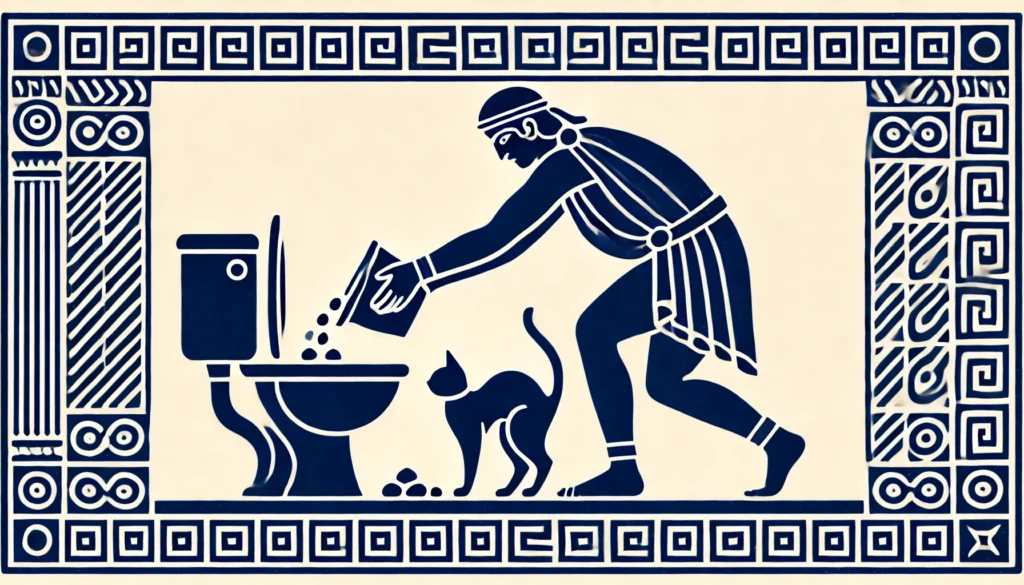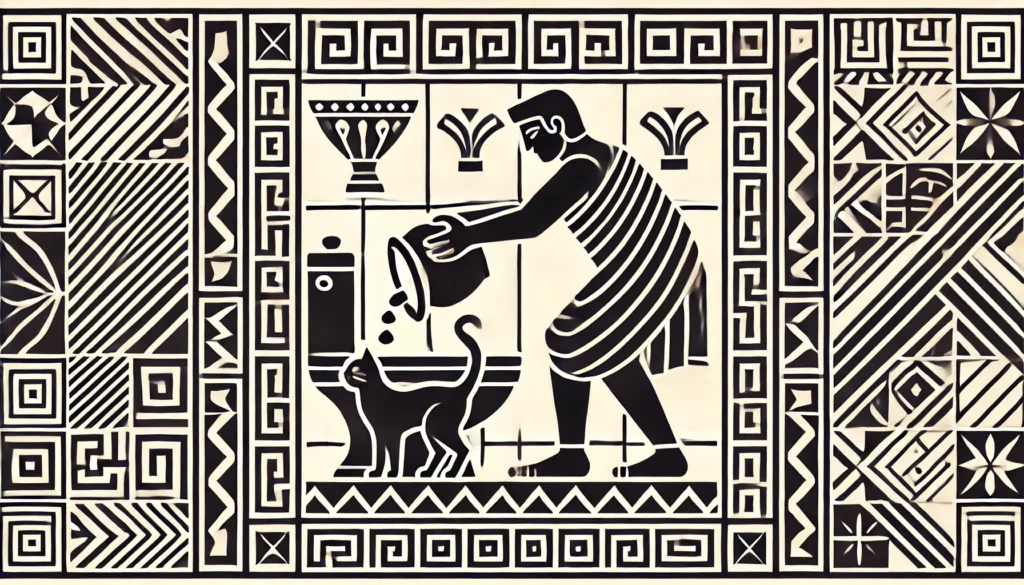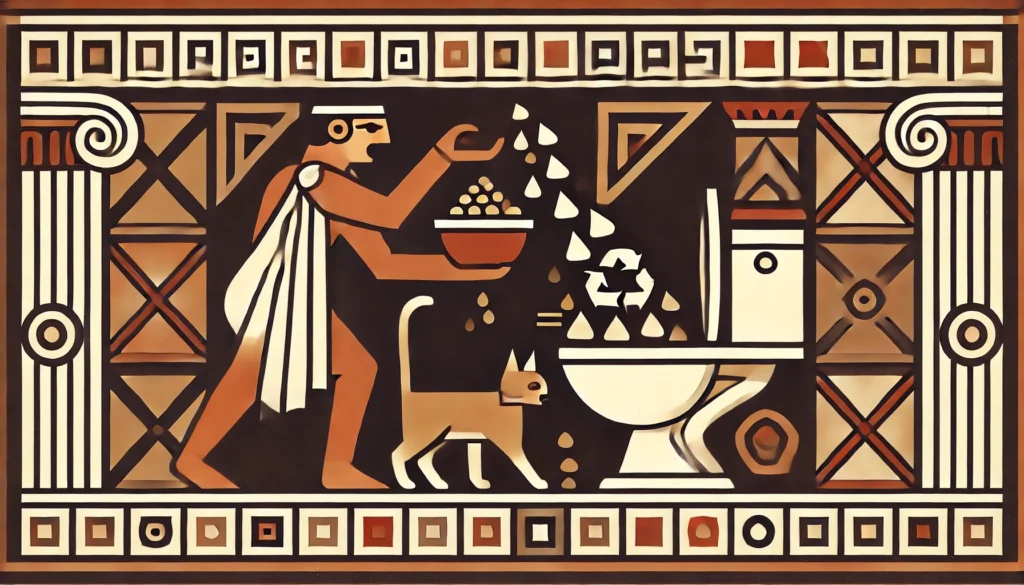You might think flushing cat litter down the toilet is a quick and easy fix for dealing with your cat’s waste, but it’s far from harmless. In fact, this “convenience” can turn into a nightmare with clogged pipes, environmental contamination, and even health risks.
Fortunately, there are smarter, safer ways to dispose of cat litter that won’t harm your home or the planet. Stick with us, and we’ll show you the best alternatives for keeping your pipes clear and your conscience clean.
Key Takeaway
- Flushing cat litter down the toilet can lead to expensive plumbing issues and blockages.
- It can contribute to environmental contamination, affecting waterways and wildlife.
- Certain natural litters, like World’s Best Cat Litter and sWheat Scoop, can be composted, but only in dedicated, non-edible compost piles.
- Always dispose of cat litter in a safe way, such as using biodegradable bags or a designated trash bin.
- By choosing responsible disposal methods, you can protect your home, plumbing, and the environment.
You may also like “6 Insights on What Dissolves Cat Litter in a Drain”
Plumbing Problems: Cat Litter and Pipes Don’t Mix
One of the main reasons you should not flush cat litter down the toilet is the damage it can cause to your plumbing system.
Most cat litters, especially the clumping kind, are designed to absorb moisture and form solid clumps. While this is great for cleaning your cat’s litter box, it’s terrible for your pipes.
Brands like Fresh Step and Arm & Hammer Clump & Seal create strong clumps that expand when exposed to water. Imagine those clumps hardening inside your pipes—that’s a recipe for clogs and costly repairs.
Even if the litter claims to be “flushable,” like some versions from World’s Best Cat Litter, it’s best to err on the side of caution.
Most older plumbing systems aren’t designed to handle any form of litter, and over time, small clumps can build up and block your pipes.
Types of Cat Litter You Should Never Flush
Here is a list of cat litters that we believe that you should never flush down the toilet.
Clay-Based Litters
Let’s discuss the types of cat litter that are particularly problematic when flushed. For instance, clay-based litters like Arm & Hammer’s Double Duty form hard clumps that are almost impossible to break down, leading to significant clogs.
Natural Litters
Natural cat litters like those made from corn (e.g., World’s Best Cat Litter) or wood (like Okocat) may seem like they’d dissolve easily, but they still expand and cause blockages.
The natural fibers don’t break down quickly enough once they’ve entered your plumbing system.
Scented Litters and Additives
Another big issue lies in the additives present in many types of cat litter. Scented litters, for example, contain chemicals that are not only harsh on your plumbing but also contribute to environmental pollution.
Even “eco-friendly” brands can contain additives that don’t dissolve well in water.
Silica-Based Litters
Meanwhile, silica-based litters (like PrettyLitter) might seem like a safer option because they don’t clump in the same way clay-based ones do.
However, they can still cause problems due to their crystalline structure, which doesn’t break down easily and can lead to accumulation and blockages.

Septic Systems and Sewer Lines: A Bigger Mess
If you have a septic system, flushing cat litter is a big no-no. Cat litter can cause blockages in your septic tank, leading to backups and even system failure.
Litter doesn’t break down the way toilet paper does, and septic tanks rely on natural bacteria to break down waste. When you flush litter, it disrupts this process, which can be expensive to fix.
Sewer lines aren’t safe either. Flushing cat litter down the toilet can lead to blockages in municipal sewer systems, causing overflows or backups.
Municipal wastewater treatment plants are not designed to filter out cat litter particles, and this can contribute to larger environmental issues, which brings me to the next point.
What You Should Do Instead: Safe Disposal Tips
So, if flushing cat litter down the toilet isn’t an option, what should you do with it? Don’t worry, there are safer and more environmentally friendly ways to dispose of your cat’s waste:
- Use Biodegradable Bags: Scoop the litter into biodegradable or compostable bags and throw it away in your regular trash. This method ensures that the litter is contained and disposed of properly.
- Composting (for Certain Litters): If you use a natural, plant-based litter like World’s Best Cat Litter (corn-based) or sWheat Scoop (wheat-based), you might be able to compost it—but make sure to create a separate compost pile for pet waste. Never use composted litter on edible plants, as the waste could contain harmful bacteria or parasites.
- Dedicated Trash Bin: Keep a designated trash bin with a tight lid specifically for your cat’s litter. This reduces odors and keeps the waste contained until it’s time to take out the trash.
Health Risks: It’s More than Just Your Cat’s Waste
As I mentioned earlier, Toxoplasma gondii is a serious health concern, not just for wildlife but also for humans.
Pregnant women and people with weakened immune systems are especially vulnerable to the parasite. If cat litter makes its way into our waterways or drinking water, the risk of infection increases.
In addition to parasites, some clay-based litters, like Tidy Cats or Fresh Step, contain silica dust, which can be harmful when inhaled.
While most people won’t experience immediate health issues from silica, repeated exposure can lead to respiratory problems.
If you flush cat litter, these harmful particles could become airborne during the wastewater treatment process.

FAQ: Why You Shouldn’t Flush Cat Litter
What happens if you try flushing cat litter?
Flushing cat litter can block your pipes and create a big plumbing headache. Plus, it harms the environment by sending unwanted materials into the water system.
How quickly can cat litter clog your toilet?
It can clog immediately if the litter forms clumps, but even smaller amounts build up over time. Either way, you’re setting yourself up for a messy and costly problem.
Is it okay to wash cat litter down the drain?
Definitely not! Cat litter doesn’t break down in water, so it’ll just sit there and eventually block your drain.
Is Tidy Cat litter safe to flush?
Tidy Cat litter isn’t made for flushing. Its clumping action is perfect for the litter box but disastrous for your plumbing.
How do you clear cat litter from a toilet?
You’ll need a plunger or possibly a plumber to remove the litter. Whatever you do, don’t flush again or you’ll make things worse!
Which kinds of cat litter are okay to flush?
Some types, like corn or wood-based litters, are labeled as flushable. But to avoid any risk, it’s safer to just throw them in the trash.
Where should you throw away used cat litter?
The best place to dispose of cat litter is the trash, ideally in a biodegradable bag. This way, you’ll protect both your plumbing and the environment.
Does cat litter dissolve in water?
No, cat litter doesn’t dissolve in water. It clumps up, which is handy in the litter box but terrible for your pipes.
Can you flush Naturally Fresh cat litter?
Even though it’s made from natural materials, Naturally Fresh shouldn’t be flushed. It can still expand and clog your pipes, so stick with tossing it in the trash.
Final Thoughts: Protect Your Home and the Environment
While it might seem like a quick solution, flushing cat litter down the toilet can cause more harm than good.
From clogged pipes to environmental damage, there are plenty of reasons why you should avoid this practice.
Instead, stick to safer disposal methods like composting or using biodegradable bags. By making small changes in how we handle our cat’s waste, we can protect our homes, our health, and the environment.
If you’ve ever been tempted to flush that litter, now you know why it’s best to keep it out of the toilet and opt for a smarter solution.


